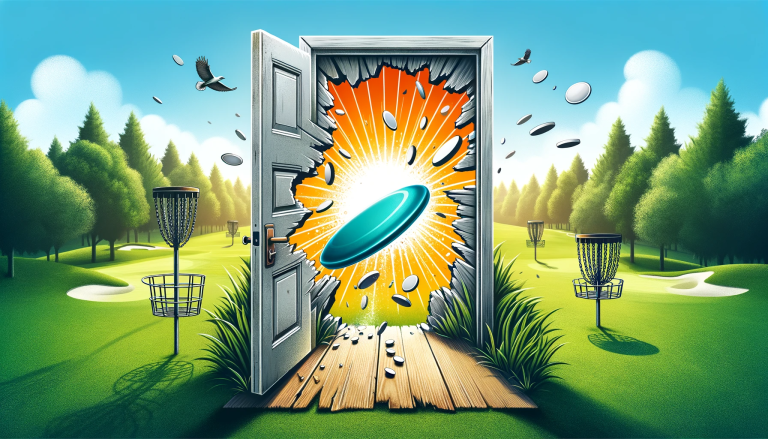How to Pick the Right Disc For a Shot? Strategies To Improve Your Shot
How to pick the right disc for a shot – this question often pops up in my mind every time I’m on the disc golf course. Unlock disc golf success with expert tips on selecting discs for distance, shape, wind, and terrain. Elevate your game now. I’ve realized that selecting the perfect disc is more art than science. Each choice feels like a personal journey, reflecting my style and approach to the game. I remember when I first started playing disc golf; the array of discs felt overwhelming. But over time, I learned that each disc has its unique personality, just like us players.
It’s about understanding which disc will be your ally for each specific shot. Whether it’s a long drive down the fairway or a precise approach to the basket, the right disc can make all the difference. Trust me, I’ve had my share of trial and error, and through these experiences, I’ve gathered some insights that might help you on your disc golf adventure.
How to Pick the Right Disc For a Shot?
Picking the right disc for a shot in disc golf is an essential skill that I’ve honed over years of practice. Each course and shot presents a unique challenge, and understanding which disc to use can be the difference between a birdie and a bogey. I’ve learned that wind, distance, and course layout influence my disc choice.
My journey in mastering this skill has involved a lot of experimentation, and now, I feel confident sharing my insights with fellow enthusiasts. Whether you’re a beginner or an experienced player, understanding disc selection is crucial for improving your game. In this guide, I’ll share the knowledge I’ve gathered to help you make informed decisions on the course.
Understanding Disc Golf Discs
When I first stepped into the world of disc golf, the variety of discs amazed me. Choosing the right disc for each shot quickly became a crucial part of my game strategy.
Types of Discs: Navigating the Options
Disc golf offers a range of discs, each suited for different aspects of the game. I’ve experimented with various types to find my favorites.
Distance Drivers
These are the game-changers for long-range shots.
I’ve learned that they require more power and skill, which I developed over time.
Fairway Drivers
Ideal for those intermediate shots where precision matters as much as distance.
I often use these when I need a balance between distance and accuracy.
Mid-Ranges
It is my go-to for shorter, more controlled shots.
They’re great for navigating obstacles and honing in on the basket.
Putters
Essential for the final throws to the basket.
I’ve found that their stability and slower speed offer unmatched precision.
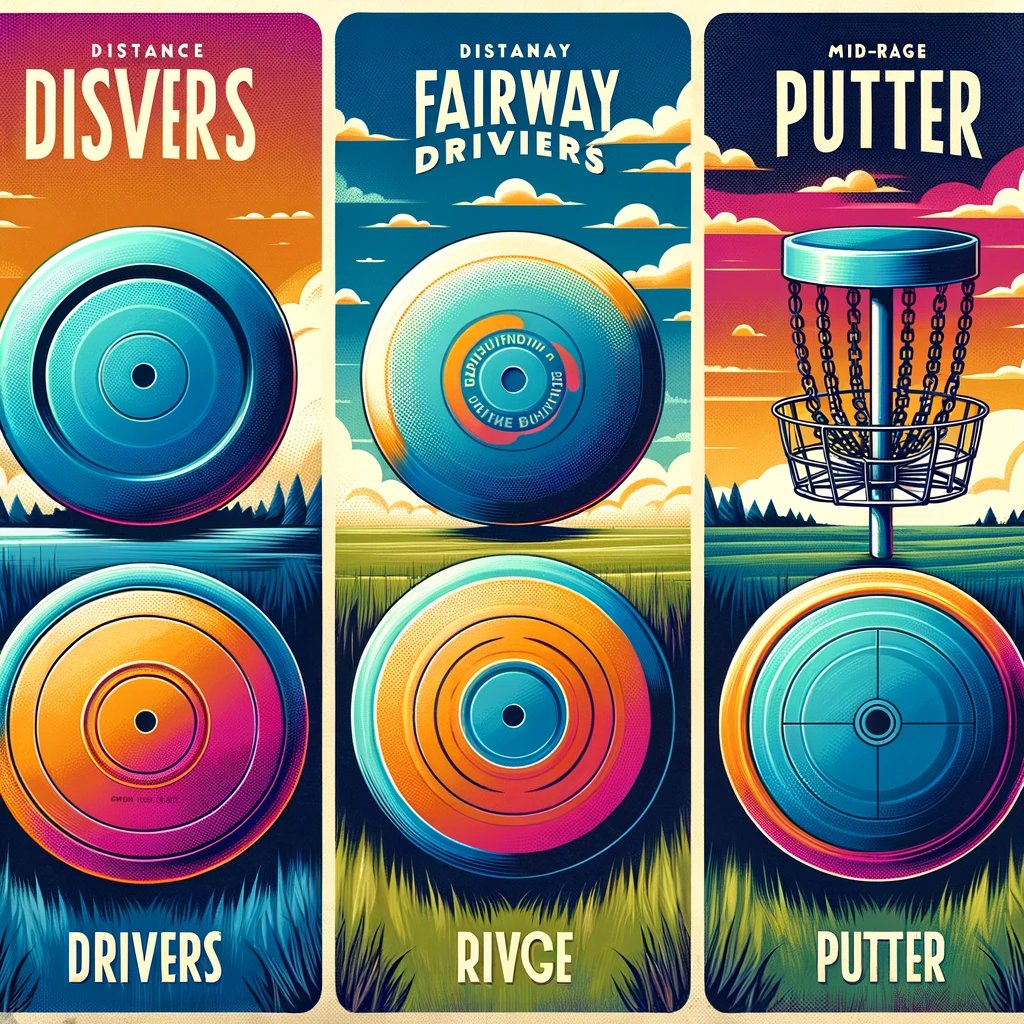
Disc Properties: It’s All in the Details
Each disc has unique properties – weight, shape, and type of plastic. These factors heavily influence the disc’s flight and stability, something I always consider when picking my disc for a shot.
You May Also Like To See: Find Your Weakness to Eliminate Strokes Off Your Round?
Weight
Heavier discs offer more stability, especially in windy conditions.
I’ve often opted for lighter discs for more distance and maneuverability.
Shape
The disc’s rim depth and width affect its grip and release.
Through trial and error, I’ve found shapes that feel comfortable and suit my throwing style.
Plastic Types
The durability and grip of the disc depend on the plastic.
I prefer premium plastics for their longevity and consistent performance.
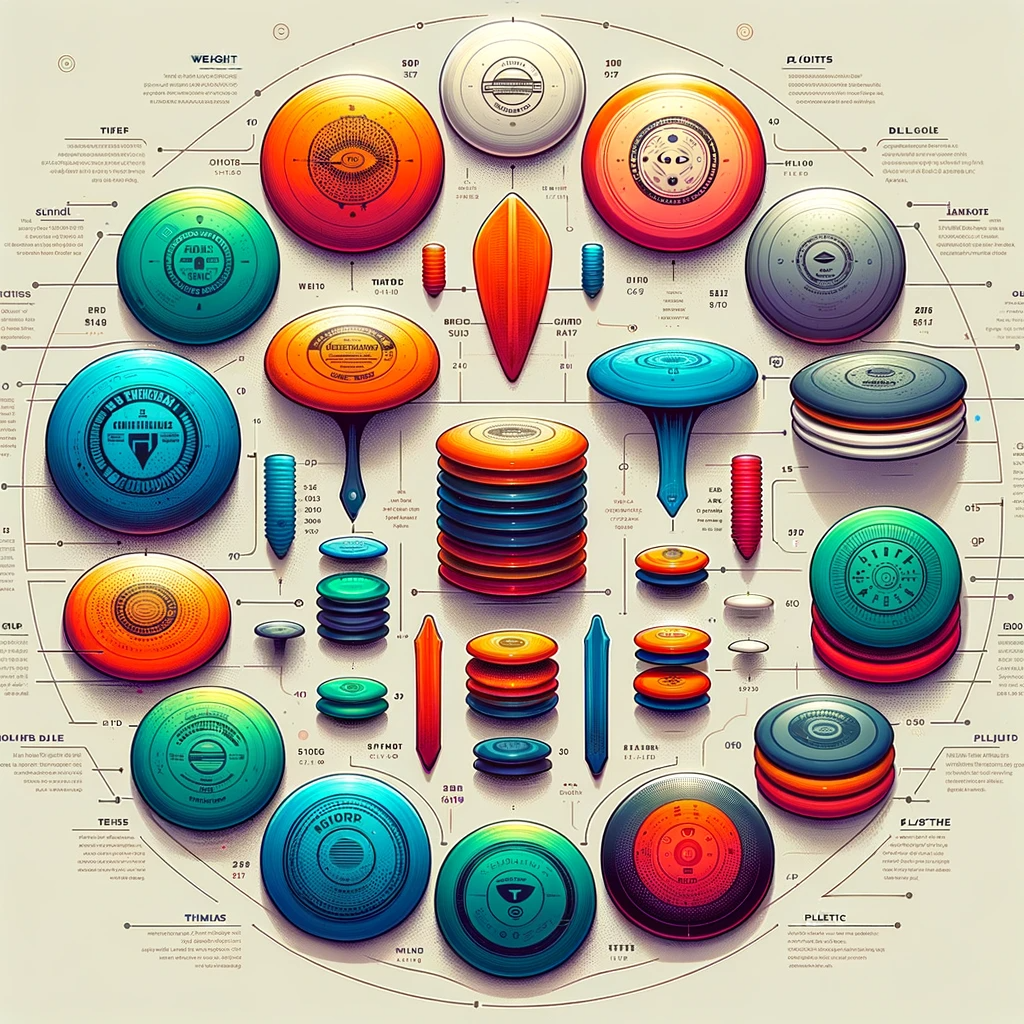
How do I Pick the Right Disc for a Shot?
Choosing the right disc for each shot in disc golf is like solving a unique puzzle every time I step onto the course. It’s a blend of art and science, tailored to my playing style and the course’s demands.
Factors to Consider
Skill Level
As a player, I’ve seen my skill level dictate my disc choice. Beginners prefer more stable, easy-to-control discs, while advanced players can handle more aggressive, less stable options.
Over the years, I’ve graduated from simple, forgiving discs to more complex models that offer a wider range of possibilities.
Desired Distance
Each shot’s intended distance plays a crucial role in disc selection.
For long-distance drives, I lean toward distance drivers, whereas, for mid-range shots, I prefer mid-range discs that offer better control.
Disc Stability
Understanding disc stability – how a disc behaves in flight – has been key to refining my choices.
I’ve learned to pick stable discs for windy conditions and more understable discs when I need a curving flight path.
Assessing the Shot Distance
How Far is the Shot?
Gauging the shot distance helps me decide which disc to use.
For instance, a 300-foot shot calls for a different disc than a 100-foot approach.
Selecting Discs for Different Distances
I’ve built a mental catalog of which discs work best for various distances.
It’s about matching the disc’s capabilities with the shot’s requirements – a skill honed through practice and experience.
Personal Experiences with Specific Disc Models
Over time, I’ve formed bonds with certain discs for particular distances.
For example, a specific fairway driver has become my go-to for shots around 250 feet due to its reliable flight pattern.
Analyzing Shot Shape
Understanding shot shape in disc golf is crucial for making accurate throws. Over time, I’ve learned how to choose the right disc for each type of shot – hyzer, anhyzer, and straight.
What is the Shot Shape?
The shot shape refers to the flight path the disc takes. Each shape demands a specific type of disc to execute it correctly.
Choosing Discs for Hyzer Shots
Hyzer shots curve inward, relative to the throwing hand.
For these shots, I usually select a disc that naturally fades toward the end of its flight.
Selecting Discs for Anhyzer Shots
Anhyzer shots do the opposite, curving away from the throwing hand.
Here, I opt for discs with a more understable flight pattern to maintain the outward curve.
Straight Shots
For straight shots, the goal is a balanced, straight flight path.
I prefer discs that are stable and can maintain a straight line with minimal fade or turn.
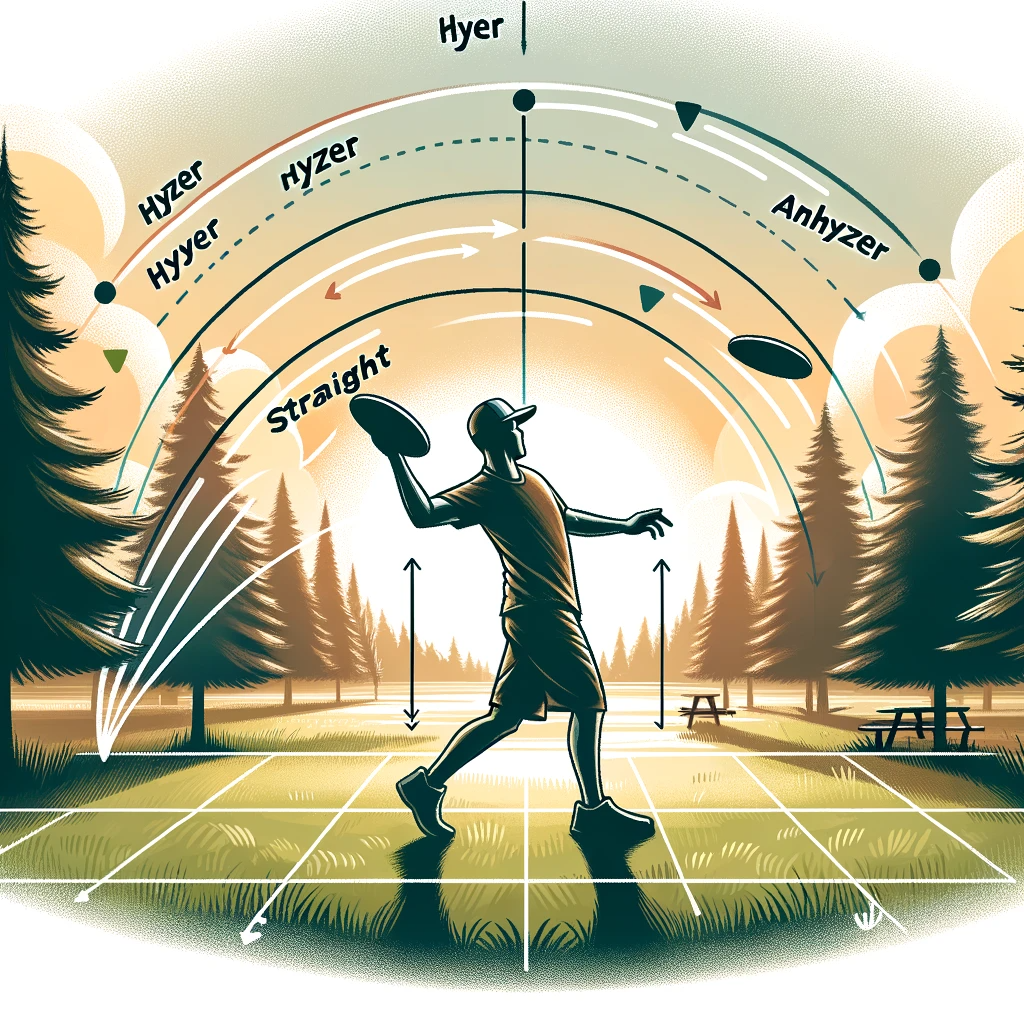
Case Examples of Disc Selection for Different Shot Shapes
I remember using a specific mid-range disc for a straight shot through a narrow fairway. Its stability made it the perfect choice for that precise throw.
Considering Wind Direction and Conditions
What is the Wind Direction?
Wind direction significantly affects disc selection and throwing technique. I always assess the wind before choosing my disc.
Understanding Wind Direction in Disc Golf
In my disc golf experience, recognizing the impact of wind direction has been pivotal. It’s a critical factor that greatly influences my choice of disc and how I approach each throw. Before stepping up for a throw, I make it a habit to assess the wind’s direction and strength. This assessment isn’t just a routine; it’s a strategic decision that can dramatically alter the flight of the disc. Whether it’s a headwind or tailwind, each type of wind necessitates a different selection and throwing style. By attuning myself to these nuances, I’ve been able to make more informed decisions on the course, leading to more effective and controlled throws.
Selecting Discs for Headwind
In a headwind, discs tend to turn more.
I choose more stable or overstable discs to counteract this effect.
Tailwind Conditions
Tailwinds make discs behave more stable.
Here, I might use a slightly less stable disc to achieve the desired distance and flight path.
Crosswind Conditions
Crosswinds are tricky and require a disc that can handle the unpredictable lateral movement.
I tend to go with a disc that offers a good balance between stability and glide.
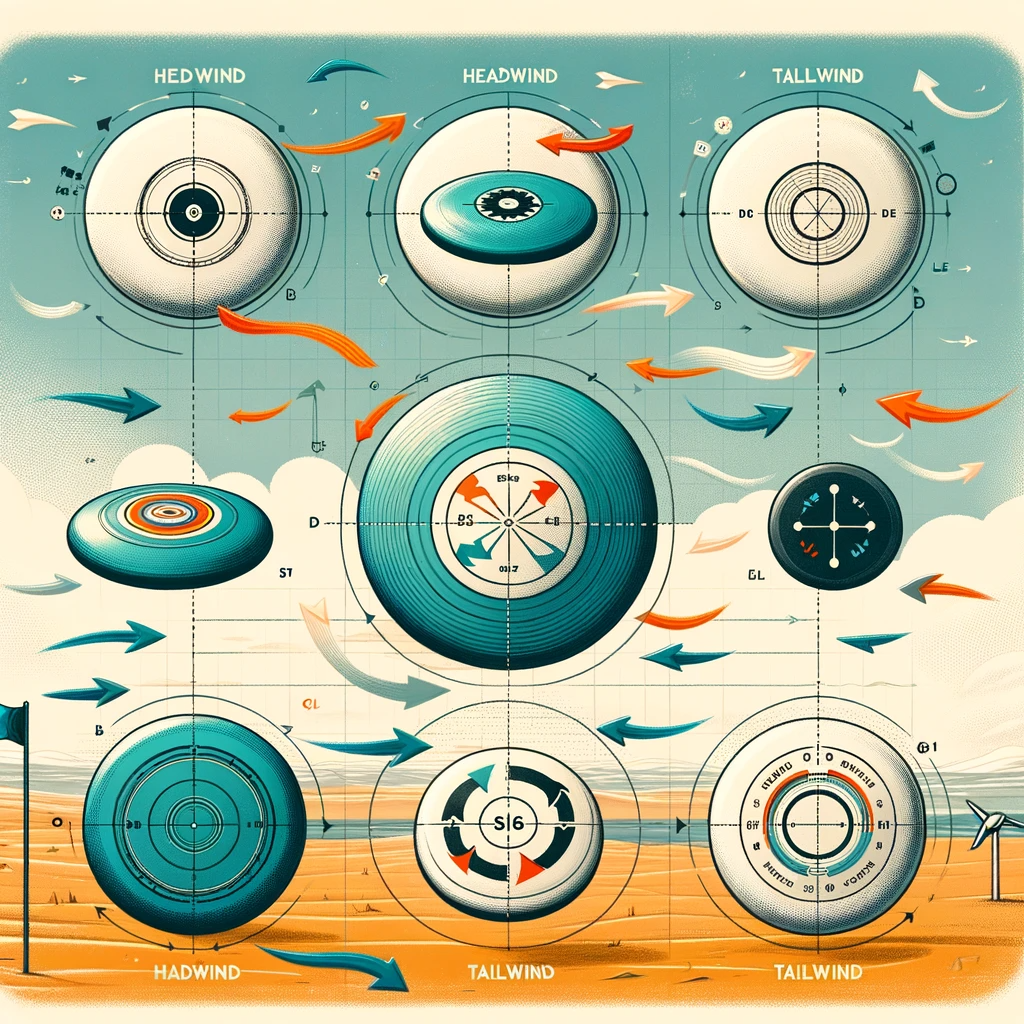
Tips for Adjusting Throw Technique in Different Wind Conditions
Adjusting the angle of release and power of the throw is key in windy conditions.
I’ve learned to throw lower and with more force in a headwind, and higher with less force in a tailwind.
Navigating the Course Layout
Every disc golf course offers its unique challenges. Over the years, I’ve learned that understanding the course layout is as crucial as having the right disc in my bag.
What is on the Way to, Near, and Beyond the Basket or Landing Zone?
Each course has a mix of obstacles like trees, hills, and water hazards.
I always scout these elements before a game to plan my shots.
You May Also Like To See: How to Aim a Backhand in Disc Golf?
Strategy for Selecting Discs Based on Course Obstacles and Layout
When I encounter a heavily wooded area, I opt for discs that offer better control.
For open fields, I prefer discs that can cover more distance.
Personal Anecdotes about Navigating Challenging Courses
I recall a course with a narrow fairway flanked by trees. Choosing a mid-range disc for precision helped me navigate through it successfully.
Building Confidence with Your Disc Selection
Confidence: Developing Trust in Your Disc Choice
Confidence in disc golf comes from familiarity with your discs.
I spend time practicing with each disc to understand its flight pattern under various conditions.
The Psychological Aspect of Disc Golf
Mental preparation is as important as physical skills in disc golf.
I focus on positive visualization and strategy before each throw.
Strategies for Building a Reliable Disc Golf Bag
I diversify my disc selection to cover a wide range of shots.
Keeping a mix of drivers, mid-ranges, and putters ensures I’m prepared for any course layout.
Wrap-Up
Summarizing Key Points
Understanding the course layout and choosing the right disc are essential skills in disc golf.
Building confidence in your disc choice comes from practice and experience.
Encouraging Practice and Experimentation
I encourage every disc golfer to experiment with different discs and courses.
This exploration is key to finding your unique style and improving your game.
Final Thoughts and Encouragement for Continuous Improvement
Remember, every round of disc golf is a learning opportunity.
Keep practicing, stay confident, and enjoy the journey of mastering this wonderful sport.
Conclusion
In disc golf, selecting the right disc for each shot is crucial. It’s about understanding your discs, the course, and how they interact. Through practice, you’ll learn which disc works best for any situation, enhancing your game and enjoyment. Remember, the right choice makes all the difference!
FAQs
Q1: How does disc weight affect my shot?
Answer:
Disc weight influences stability and distance. Heavier discs offer more control in the wind, while lighter ones may provide greater distance.
Q2: What’s the best disc for a beginner?
Answer:
Beginners should start with stable, mid-range discs. They’re easier to control and provide a balanced introduction to the game.
Q3: How do I choose a disc for windy conditions?
Answer:
In windy conditions, opt for heavier, more stable discs. They resist the wind better, offering more predictable flight paths.



